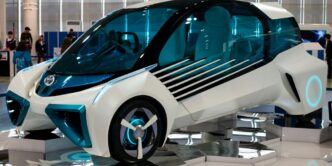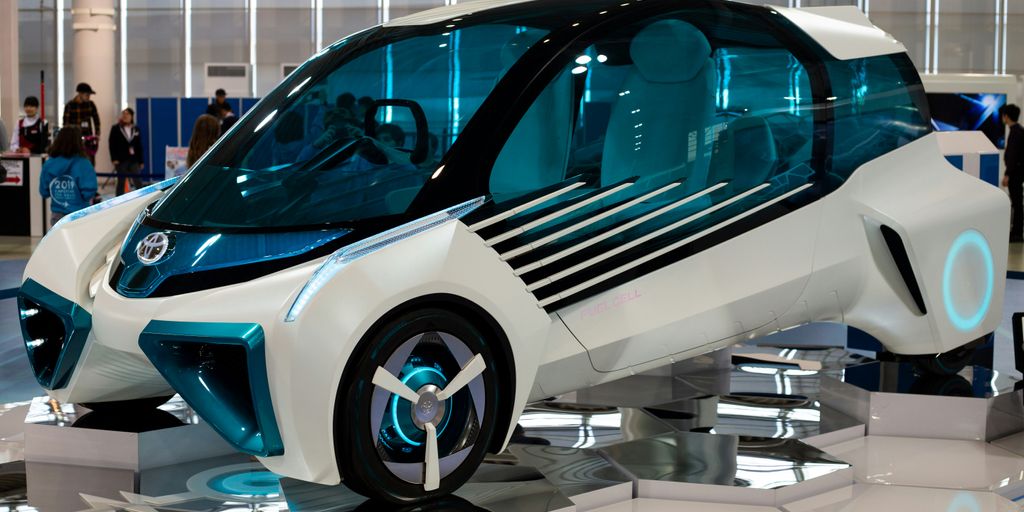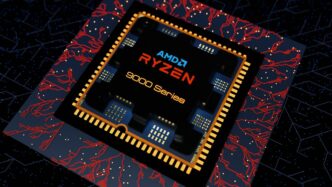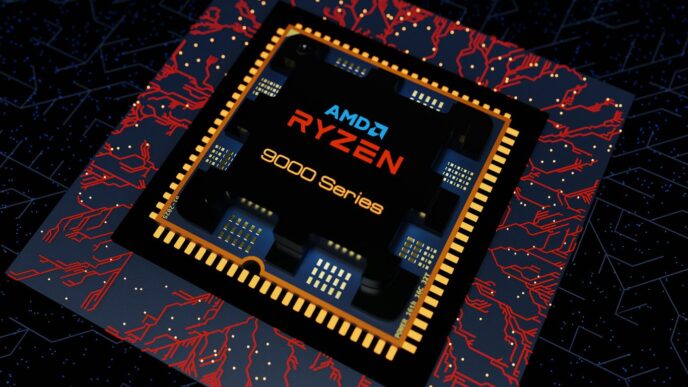The way we drive and what we expect from our cars has changed a lot, and a big reason for that is Elon Musk’s Tesla car. What started as a small company making electric vehicles has really grown into something huge. It now shapes how cars are made, how they look, and even how we think about energy. Tesla’s new ideas go way past just making electric cars. They are shaking up the whole car world. This article will look at how Tesla, with Musk’s ideas leading the way, has changed the car business and what that means for how we’ll get around in the future.
Key Takeaways
- Elon Musk’s Tesla car started small but completely changed what people thought an electric car could be.
- Tesla doesn’t do things the old way; they make almost everything themselves and sell cars directly to customers, which is pretty different.
- The company keeps pushing the limits with battery tech, self-driving features, and sending software updates right to your car.
- Elon Musk’s Tesla car has made other car companies get serious about electric vehicles and build more charging stations.
- Tesla has really changed car design and what drivers now expect from their vehicles, like fast performance and cool features.
The Rise of the Elon Musk Tesla Car

Founding Vision and Early Innovations
Tesla’s journey began with a bold vision: to accelerate the world’s transition to sustainable energy. It wasn’t just about making electric cars; it was about changing the whole game. The early days were tough, but Elon Musk and his team were determined to prove that electric vehicles could be desirable, high-performing, and practical. The Tesla Roadster, released in 2008, was a game-changer. It showed the world that electric cars weren’t just glorified golf carts; they could be fast, stylish, and have a decent range. This initial success laid the foundation for everything that followed.
Pivotal Moments in Electric Vehicle Perception
Before Tesla, electric cars were often seen as slow, boring, and impractical. Tesla changed that narrative. The Roadster was a start, but the Model S really cemented Tesla’s place in the automotive world. It wasn’t just an electric car; it was a luxury sedan that happened to be electric. People started to see EVs as a viable alternative to gasoline cars. Tesla’s Supercharger network also played a huge role. Suddenly, long-distance travel in an EV became possible. These moments shifted public perception and paved the way for wider EV adoption. The company’s finances and supply chain were a challenge, but they pushed through.
Redefining Automotive Industry Standards
Tesla didn’t just make electric cars; it redefined how cars are made and sold. Their direct-to-consumer sales model bypassed traditional dealerships, giving them more control over the customer experience. They also embraced over-the-air software updates, allowing them to improve their cars and add new features remotely. This was unheard of in the automotive industry. Tesla also pushed the boundaries of battery technology and autonomous driving systems. They forced other automakers to rethink their strategies and accelerate their own EV development. Tesla is forcing the auto industry to change rapidly. Here’s a quick look at how Tesla’s approach differs:
- Direct Sales Model
- Over-the-Air Updates
- Focus on Battery Tech
Tesla Disrupts Traditional Automotive Norms

Tesla’s impact on the auto industry goes way beyond just making electric cars. They’ve completely shaken up how things are done, challenging norms that have been in place for decades. It’s like seeing a tech company like Apple or Google suddenly start building cars – that’s the level of disruption we’re talking about.
Vertically Integrated Manufacturing Model
Traditional automakers usually rely on a complex web of suppliers for parts and manufacturing. Tesla, on the other hand, has adopted a vertically integrated model. This means they try to control as much of the production process as possible, from designing their own battery cells to writing the software that runs the cars. This gives them more control over quality and allows them to innovate faster. However, it also presents challenges, especially when it comes to scaling up production and managing the supply chain. Think of it like building a house – most people hire different contractors for plumbing, electrical work, etc. Tesla is trying to do it all themselves.
Direct-to-Consumer Sales Approach
Forget dealerships! Tesla’s direct-to-consumer sales model was a game-changer. Instead of relying on independent dealerships, Tesla sells its cars directly to customers through its own stores and online. This cuts out the middleman, allowing Tesla to control the customer experience and pricing. It also means they don’t have to deal with the often-conflicting interests of dealerships, who might be more interested in selling gas-powered cars. This approach has forced other automakers to rethink their sales strategies, with some experimenting with online sales and direct-to-consumer models of their own.
Rapid Innovation and Adaptation
Tesla’s ability to innovate and adapt quickly is another key factor in its disruptive success. They’re constantly pushing the boundaries of what’s possible with electric vehicles, whether it’s improving battery range, developing new autonomous driving features, or refining their manufacturing processes. This rapid pace of innovation keeps them ahead of the competition and forces other automakers to play catch-up. It’s like they’re running a marathon at a sprint’s pace, constantly pushing themselves and the industry forward. The automotive industry is evolving at an unprecedented rate.
Advancements in Elon Musk Tesla Car Technology
Breakthroughs in Battery Technology
Tesla’s battery tech is a big deal. Their Gigafactories are working to lower battery costs while boosting how much energy they can hold. They’re trying to make batteries that last way longer, like a "million-mile battery." This would make EVs cheaper and better, and help move us toward sustainable energy. Tesla’s focus on battery innovation keeps them ahead in the EV game.
Evolution of Autonomous Driving Systems
Tesla’s Autopilot and Full Self-Driving (FSD) technology are always changing. They use data from all their cars to make the systems better. There’s been some debate about how safe and reliable these systems are, and Tesla is working to make them safer and easier to understand. They’re adding features to make sure drivers pay attention and the car can handle problems. Even with the challenges, Tesla is pushing hard to make self-driving cars a reality.
Over-the-Air Software Updates
Tesla does software updates differently. Instead of taking your car to a shop, they send updates over the internet. These updates can make the car faster, add new features, and fix problems. This keeps Tesla owners happy and makes their cars better over time. It also lets Tesla use real-world driving data to improve their autonomous driving systems.
The Impact of Elon Musk Tesla Car on the Automotive Industry
Catalyst for Electric Vehicle Adoption
Tesla’s impact on the automotive industry is undeniable. It really pushed other automakers to take electric vehicles seriously. Before Tesla, EVs were often seen as niche products, but Tesla showed that electric cars could be desirable, high-performance, and practical. This forced established manufacturers to accelerate their own EV programs. It’s like Tesla flipped a switch, and suddenly everyone was scrambling to catch up. The focus on sustainability became a key differentiator.
Influence on Charging Infrastructure Development
Tesla didn’t just make electric cars; they also built the infrastructure to support them. The Supercharger network is a prime example. It made long-distance travel in an EV feasible, reducing range anxiety. This forced other companies to invest in charging infrastructure as well. Tesla’s approach to charging has also pushed for standardization, making it easier for EV owners to charge their cars regardless of the brand. It’s like they set the standard, and now everyone else is trying to meet it.
Shaping Environmental Regulations and Investments
Tesla’s success has also influenced environmental regulations and investments. Governments are now more likely to support electric vehicle adoption through incentives and policies. This is partly due to Tesla demonstrating the viability of EVs and their potential to reduce emissions. It’s like Tesla showed them the way, and now they’re following suit. The company’s commitment to renewable energy has also inspired other businesses to invest in sustainable practices. It’s not just about cars; it’s about a whole new way of thinking about energy and transportation.
Market Disruption and Competition from Elon Musk Tesla Car
Impact on Legacy Automakers
Tesla’s arrival really shook things up for the old guard of automakers. They couldn’t just ignore electric vehicles anymore. Now, you see companies like Ford and GM pouring billions into their own EV programs, trying to catch up. It’s not just about making electric cars, though. They’re having to rethink their entire approach to manufacturing and sales. It’s a huge shift, and Tesla definitely lit the fire under them. This has led to a surge in electric vehicle options for consumers.
Emergence of New Entrants
It’s not just the big guys that Tesla influenced. A bunch of new companies jumped into the EV game, inspired by Tesla’s success. You’ve got startups popping up all over the place, trying to be the next big thing in electric cars. This creates a dynamic environment that fosters continuous advancements in automotive technology and design.
Accelerating Industry Innovation
Tesla’s impact goes beyond just electric cars. They’ve pushed the whole industry to innovate faster. Whether it’s battery technology, autonomous driving, or even just the way cars are sold, Tesla has set a new bar. Other companies are scrambling to keep up, which means we’re seeing new features and improvements across the board. It’s a win for consumers, even if you’re not a Tesla fan. The company’s direct-to-consumer sales model is another disruptive innovation.
The Influence of Elon Musk Tesla Car on Automotive Design and Consumer Expectations
Design Innovations and Trends
Tesla’s impact on car design is hard to miss. They really pushed for those minimalist interiors and high-tech dashboards, and now everyone’s doing it. Think about the Model S – that giant touchscreen that controls basically everything? It was a big change from all the buttons and knobs we were used to. Now, other car companies are trying to copy that kind of design. It’s interesting to see how one company can change the whole game. The focus on automotive infotainment equipment is a trend that is here to stay.
Reshaping Performance Benchmarks
Tesla didn’t just change how cars look; they changed what we expect from them. The speed and handling of Teslas, especially the Model S Plaid, set a new bar for performance. Other car makers are now trying to catch up. It’s like Tesla said, "Electric cars can be super fast and fun to drive," and now everyone else is scrambling to prove they can do it too. It’s good for us, the consumers, because we get better cars out of it.
New Standards for Vehicle Features
Tesla also made us expect more from our cars in terms of features. Getting software updates over the air? That used to be a thing of the future, but now it’s normal. And advanced driver-assistance systems? Tesla’s Autopilot might not be perfect, but it showed us what’s possible. Now, people expect these kinds of features in their cars. It’s like Tesla raised the bar, and now everyone has to jump higher. Here’s a quick rundown:
- Over-the-air software updates
- Advanced driver-assistance systems
- Minimalist interior design
The Role of Elon Musk Tesla Car in Advancing Sustainable Energy Solutions
Integration of Energy Products
Tesla isn’t just about cars; they’re pushing for a complete shift in how we use energy. Their acquisition of SolarCity was a big step, leading to products like the Powerwall and Solar Roof. These aren’t just add-ons; they’re designed to work together, creating a home energy ecosystem. It’s about generating your own clean energy and storing it for when you need it. I think that’s pretty cool.
Commitment to Renewable Energy
Tesla’s commitment goes beyond just making electric cars. They’re actively trying to reduce carbon emissions and promote renewable energy adoption. It’s not just talk either; they’re putting their money where their mouth is. The hydrogen fuel cell vehicle market is growing, and Tesla is helping to drive that growth. They’ve shown that electric vehicles can be viable, which has influenced policy and encouraged others to invest in green tech. Here are some ways they are doing it:
- Investing heavily in battery technology to improve range and reduce costs.
- Building a vast Supercharger network powered by renewable energy.
- Advocating for policies that support renewable energy and electric vehicle adoption.
Driving Global Sustainability Efforts
Tesla’s impact is global. They’re not just selling cars in America; they’re expanding worldwide, pushing other automakers to develop their own electric vehicles. This competition is good for everyone, accelerating the transition to sustainable transportation. It’s like they’ve lit a fire under the industry, and now everyone’s scrambling to catch up. Tesla’s influence extends to:
- Setting new standards for vehicle performance and efficiency.
- Inspiring other companies to invest in renewable energy solutions.
- Raising awareness about the importance of sustainability among consumers and businesses.
The Road Ahead for Tesla and the Auto World
So, what does all this mean for cars and driving? Tesla really shook things up, showing everyone that electric cars could be cool and fast, not just some weird niche thing. They made other car companies wake up and start making their own electric models, which is pretty neat for us, the buyers. Now we have more choices than ever. Sure, Tesla has had its ups and downs, like any company trying to do big, new stuff. But you can’t deny they changed the game. It’s going to be interesting to see what happens next, but one thing’s for sure: the car world isn’t going back to how it was before Tesla came along.
Frequently Asked Questions
What exactly is Tesla?
Tesla is a car company started by Elon Musk that makes electric cars and other energy products. It’s known for making cool electric vehicles that go fast and have lots of tech.
How did Tesla change the car industry?
Tesla changed the car world by showing electric cars could be awesome, not just boring. They made them fast, stylish, and full of new tech. This made other car companies start making electric cars too.
What makes Tesla’s technology special?
Tesla cars can go a long way on a single charge thanks to their advanced batteries. They also have features like Autopilot, which helps with driving, and get updates over the air, just like your phone.
How does Tesla sell its cars differently?
Tesla sells its cars directly to customers online or in their stores, instead of through dealerships. They also build most of their car parts themselves, which is different from how old car companies do things.
Has Tesla influenced other car makers?
Yes, a lot! Because Tesla made electric cars popular, many big car companies like Ford and GM are now making their own electric models. Tesla also pushed for more charging stations to be built everywhere.
What’s Tesla’s role in clean energy?
Tesla wants to help the world use more clean energy. They make not just cars, but also solar panels and home batteries, trying to make sustainable living easier for everyone.














